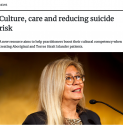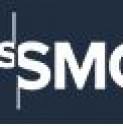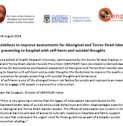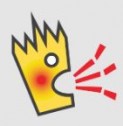The BestPrAxIS study was designed to develop best practice guidelines (the Guidelines) for psychosocial assessment of Aboriginal and Torres Strait Islander people presenting to hospital with suicidal thoughts and self-harm.
The Guidelines were developed using the Delphi method to ensure recommendations reflected the latest available evidence and the perspectives of experts and those with lived experience.
The Guidelines contain recommendations designed to:
- Develop the cultural competency of hospital staff as a foundation for providing more culturally responsive hospital mental health services.
- Recommend practices and strategies that encourage patient and cultural safety.
- Improve the quality of assessments that informs clinical decision-making.
- Promote a person-centred approach to clinical decision-making that is focused on supporting recovery in the community.
- Increase patient satisfaction with hospital services.
- Encourage future help-seeking behaviours.
The Guidelines cover essential areas of practice specific to assessing suicidal thoughts and self-harm by Aboriginal and Torres Strait Islander people, including:
- Underlying principles of best practice that support increased cultural responsiveness.
- Ways to effectively and appropriately engage and interact with Aboriginal and Torres Strait Islander people.
- The risks, needs and strengths to assess that are clinically relevant and reflect the underlying social and emotional wellbeing of Aboriginal and Torres Strait Islander people.
- How to ensure formulation of the psychosocial assessment informs culturally appropriate recommendations for care and treatment.
- Additional recommendations tailored specifically for young Aboriginal and Torres Strait Islander people.
The Guideline document has been designed as a reference for clinical practitioners, supervisors and educators to use as part of pre-service training and ongoing professional development.
BestPrAxIS research team:
- Bernard Leckning (Menzies)
- Alix Ringbauer (Formerly Menzies)
- Gary Robinson (Menzies)
- Mark Westby (Formerly Menzies)
- Tim Carey (Centre for Remote Health, Flinders University)
- Tanja Hirvonen (Flinders University)
- Gregory Armstrong (University of Melbourne)
Contact:
-
Culture, care and reducing suicide risk
RACGP | News GP
-
Guidelines to improve assessments for Aboriginal and Torres Strait Islander people presenting to hospital with self-harm and suicidal thought
Scimex (the Science Media Exchange) is an online news portal aimed primarily at helping journalists cover science.
-
Guidelines to improve assessments for Aboriginal and Torres Strait Islander people presenting to hospital
Life in Mind is a national gateway connecting Australian suicide prevention services to each other and the community.
-
New guidelines to improve assessments for Aboriginal and Torres Strait Islander people presenting to hospital with self-harm and suicidal thoughts
The Centre for Best Practice in Aboriginal and Torres Strait Islander Suicide Prevention - Guidelines for Aboriginal and Torres Strait Islander people presenting to hospital with self-harm and suicidal thought
-
NEW GUIDELINES TO IMPROVE CARE OF ABORIGINAL AND TORRES STRAIT ISLANDER PEOPLE AT RISK OF SELF-HARM AND SUICIDE
Tanja Hirvonen, Bernard Leckning and Gary Robinson write: Aboriginal and Torres Strait Islander people have higher rates of hospitalisation involving self-harm in comparison with non-Indigenous Australians








